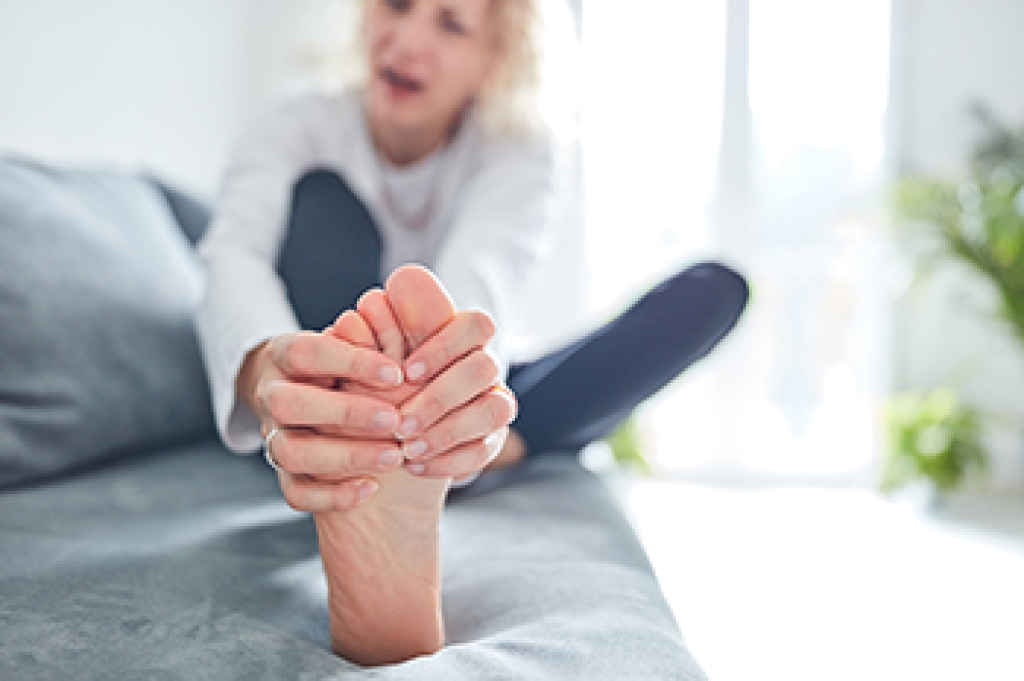You don’t have to be an athlete to sprain your ankle. This common injury can occur whenever the ligaments—which bind and support your ankle and connect bones—get overly stretched or even torn. If you sprain your ankle you may feel pain, notice swelling, and it may be difficult for you to walk. Most ankle sprains are lateral, which means they affect the outside of your ankle. Ankle sprains are graded according to the severity of the sprain as well as the damage caused. Grade 1 sprains involve mild stretching of the ligaments with no tearing. Typically, this type of sprain will produce minimal pain, tenderness and swelling with no joint instability or bruising. There is usually no difficulty walking either. Partial tears, moderate pain/swelling/tenderness and bruising are indicative of a Grade 2 sprain. There may also be difficulty walking and some ankle instability. Grade 3 sprains result in ruptures or tears of the ligament. They can produce severe symptoms of pain, bruising and tenderness. The ankle will be unable to bear weight, and there may be a great deal of instability and dysfunction. If you’ve suffered an ankle sprain and the symptoms do not improve soon after being injured, it is suggested that you see a podiatrist right away. You will receive a full examination and assessment, with an appropriate treatment plan depending on your grade of ankle sprain and other factors.
Although ankle sprains are common, they aren’t always minor injuries. If you need your ankle injury looked at, contact Dr. Castillo from Bronx Foot Care. Our doctor can provide the care you need to keep you pain-free and on your feet.
How Does an Ankle Sprain Occur?
Ankle sprains are the result of a tear in the ligaments within the ankle. These injuries may happen when you make a rapid shifting movement while your foot is planted. A less common way to sprain your ankle is when your ankle rolls inward while your foot turns outward.
What Are the Symptoms?
- Pain at the sight of the tear
- Bruising/Swelling
- Ankle area is tender to touch
- In severe cases, may hear/feel something tear
- Skin discoloration
Preventing a Sprain
- Wearing appropriate shoes for the occasion
- Stretching before exercises and sports
- Knowing your limits
Treatment of a Sprain
In many cases, the RICE method (Rest, Ice, Compression, and Elevate) is used to treat ankle sprains. However, you should see a podiatrist to see which treatment option would work best with your injury. In severe cases, surgery may be required.
It is important to ask your doctor about rehab options after you receive treatment for your injury. Stretching, strength training, and balance exercises may help the ankle heal while also preventing further injury.
If you have any questions, please feel free to contact our offices located in Bronx, NY Yonkers, NY . We offer the newest diagnostic and treatment technologies for all your foot care needs.





